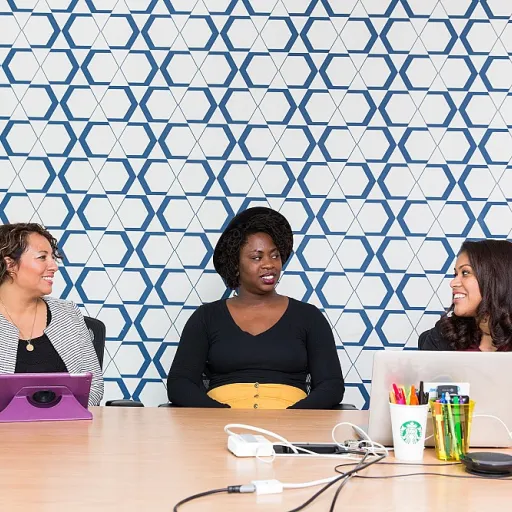
Understanding Age Discrimination
Comprehending Ageism within Work Environments
Age discrimination, or ageism, refers to the prejudice against individuals based on their age. Within the workplace, this can manifest in various forms, impacting both older employees and, in certain situations, younger workers as well. While the intention of employment law, particularly the Age Discrimination in Employment Act (ADEA), is to protect employees from being treated unfairly due to age, discrimination remains a critical issue.
The ADEA specifically prohibits employment discrimination against those aged 40 and older. Yet, instances of age discrimination persist, often subtly embedded within recruitment practices and workplace environments. Employers may unintentionally display age bias through overlooked promotions, wrongful termination, or the creation of hostile work settings for older workers. This can lead older workers to sense a diminished value compared to their younger counterparts, potentially resulting in age-based discrimination claims.
Recognizing these discriminatory practices is vital for older workers pursuing sustainable employment. Many real-world examples of age discrimination provide insight into the overt and covert signs that one might observe within a workplace.
Subtle Signs of Age Discrimination
Spotting the Subtleties of Ageism in Employment Practices
Age discrimination can be difficult to identify, yet it subtly permeates our work environments, impacting both hiring and day-to-day operations. Recognizing the signs of ageism is the first step towards addressing this prevalent issue. This knowledge not only empowers older employees but also helps create a more inclusive workplace. One of the key subtle signs of age discrimination is the use of coded language in job descriptions and during interviews. Employers may prefer "energetic" candidates or seek "digital natives," signaling a preference for younger workers. Similarly, a company might stress the desire for "recent" graduates, effectively dismissing seasoned professionals. Such language can deter older applicants from even considering positions. Additionally, evaluate the dynamics within job listings and recruitment processes. If an employer frequently emphasizes the "youthful culture" or "dynamic workforce" of their organization, it can implicitly signal an age bias. It’s essential to be vigilant and question these narratives—are they innocuous descriptions, or do they subtly perpetuate age-based discrimination? In the workplace, exclusionary behavior is another telltale sign of age discrimination. Older workers may find themselves sidelined in team meetings, passed over for promotions, or excluded from professional development opportunities. If younger employees are given preferential treatment or assigned high-impact projects while seasoned workers are overlooked, this can contribute to a hostile work environment. Performance evaluations can also harbor age bias. When feedback disproportionately highlights the need for older workers to adapt or learn new skills, while ignoring the value of their experience, it can indicate systemic discrimination. Employers must focus on the right balance of skills and experiences among their team members, rather than basing assessments solely on age. Interestingly, employment laws across various jurisdictions explicitly prohibit discrimination based on age. Understanding your rights can be a powerful tool in challenging and preventing ageism. Older workers should remain proactive in recognizing these signs. By staying informed and prepared to address potential biases, not only can individual job seekers help combat age discrimination, but collectively, they can advocate for genuine age diversity and inclusivity in the workplace.Real-World Examples of Age Discrimination
Recognizing Discrimination in Real-World Settings
Understanding the subtle nuances of age discrimination in the workplace can often be challenging for job seekers and employees alike. Ageism, a pervasive issue, manifests in various forms that are sometimes not overtly recognizable. Often, older workers report experiences where companies express a preference for younger employees under the guise of seeking "fresh perspectives" or "energy" in the workplace. This subtle bias can translate into fewer training opportunities or promotions for older employees, ultimately affecting their career trajectory. Conversely, younger workers may face assumptions about their lack of experience, which can undermine their contributions. Real-world examples often emerge through the language used during recruitment or performance reviews. For example, employers might refer to older workers as "overqualified" for roles that align well with their extensive experience. Similarly, making assumptions about an older employee's adaptability to new technologies can lead to wrongful termination or stagnation in their current role. Legal claims have also highlighted cases where older employees are replaced by younger workers who are seen as more "cost-effective." This age-based bias not only affects the individuals involved but can create a hostile work environment where employees feel undervalued or at risk. By recognizing these nuances and understanding one's rights, employees can better navigate their work environment and potentially pursue a discrimination claim where warranted. To further comprehend the complexity of age discrimination and how it operates within the employment sector, it's beneficial to examine legal cases where age discrimination was challenged and successfully addressed. For more insights into key roles within organizations and how they impact age diversity, explore comprehensive job descriptions of ROAR Social.Legal Framework and Protections
Legal Protections Against Age Discrimination
Understanding the legal frameworks that protect against age discrimination is crucial for both older and younger employees. In many countries, employment law is designed to eradicate age bias, ensuring a fair workplace for all employees regardless of their age. The Age Discrimination in Employment Act (ADEA) is a pivotal piece of U.S. legislation that prohibits discrimination against individuals aged 40 and older. This law safeguards older employees from unfair treatment, such as not being hired or being wrongfully terminated based solely on age. Employers must adhere to these legal mandates to maintain a work environment free from discrimination. Employees and job seekers who suspect ageism in the workplace can file a discrimination claim under the ADEA. It's vital for workers to recognize the signs age discrimination might be occurring, such as constant comparisons to younger workers or being passed over for promotion in favor of younger employees. Though the ADEA significantly contributes to protecting older workers, younger employees should also be aware of age-based biases. Laws vary globally, so understanding the regional legal standards regarding age discrimination is beneficial for all employees. Consulting with a law firm specializing in discrimination employment issues can provide valuable insights into your rights and assist you with navigating any claims you may need to lodge. Remember, promoting a diverse age work environment benefits both the employee and the company by fostering a culture of inclusivity and broadening the range of experiences within a team.Strategies for Job Seekers
Overcoming Barriers to Fair Employment
When confronting potential age discrimination, understanding the legal landscape and staying informed are vital. The Age Discrimination in Employment Act (ADEA) offers protection for workers aged 40 and above, prohibiting discrimination in hiring, promotions, and other employment decisions. Dealing with age bias in the workplace involves both strategy and perseverance. Here are some effective approaches:- Knowledge is Power: Familiarize yourself with employment laws and your rights as an employee. Awareness of the signs of age discrimination, combined with a grasp of legal protections, can empower you to take appropriate action if faced with age bias.
- Focus on Skills and Experience: Highlight your skills and experiences in resumes and interviews rather than focusing on age. Emphasize how you can contribute value to prospective employers and how your experience translates to improved work performance.
- Network Strategically: Developing professional connections can help older workers find new job opportunities. Engage in networking events, join relevant industry groups, and leverage social media platforms like LinkedIn to stay visible and connected.
- Continuing Education: Keeping skills current is crucial in combatting stereotypes that older employees cannot adapt to new technology or work practices. Taking courses or certificates that demonstrate ongoing learning can counteract ageist assumptions.
- Seek Support: Legal advice can be invaluable if you suspect age discrimination. Contacting a law firm specializing in employment law can assist in determining if there's a discrimination claim based on age. A legal professional can guide you through the process and help build a case if necessary.
Promoting Age Diversity in the Workplace
Fostering an Inclusive Atmosphere for All Ages
Promoting age diversity in the workplace is not just about avoiding age discrimination claims; it's about enriching your organization with diverse perspectives and experiences. Creating a work environment where both younger and older employees thrive includes acknowledging and valuing the unique contributions of each age group.- Build an Age-Inclusive Culture: Employers should actively work on creating a culture that values all employees, regardless of age. This includes providing equal opportunities for training and career advancement, and challenging stereotypes that often come with age. Both older and younger workers bring valuable skills and knowledge to the table.
- Implement Age-Diversity Training: Training programs that educate employees and managers on the importance of age diversity can help reduce age-based bias and promote inclusion. Such training can highlight the benefits that come from the collaboration of diverse age groups, enhancing productivity and innovation.
- Create Policies that Support Diverse Needs: It's important for employers to implement policies that address the different life stages of employees. Flexible working arrangements, benefits, and development opportunities that cater to various age groups can help in creating a supportive work environment.
- Encourage Mentoring Across Generations: Mentorship programs that pair younger employees with older workers can foster mutual learning and respect. Younger workers can gain insights from the experiences of their elder colleagues, while older workers can acquire new skills, such as technological proficiency from younger ones.











